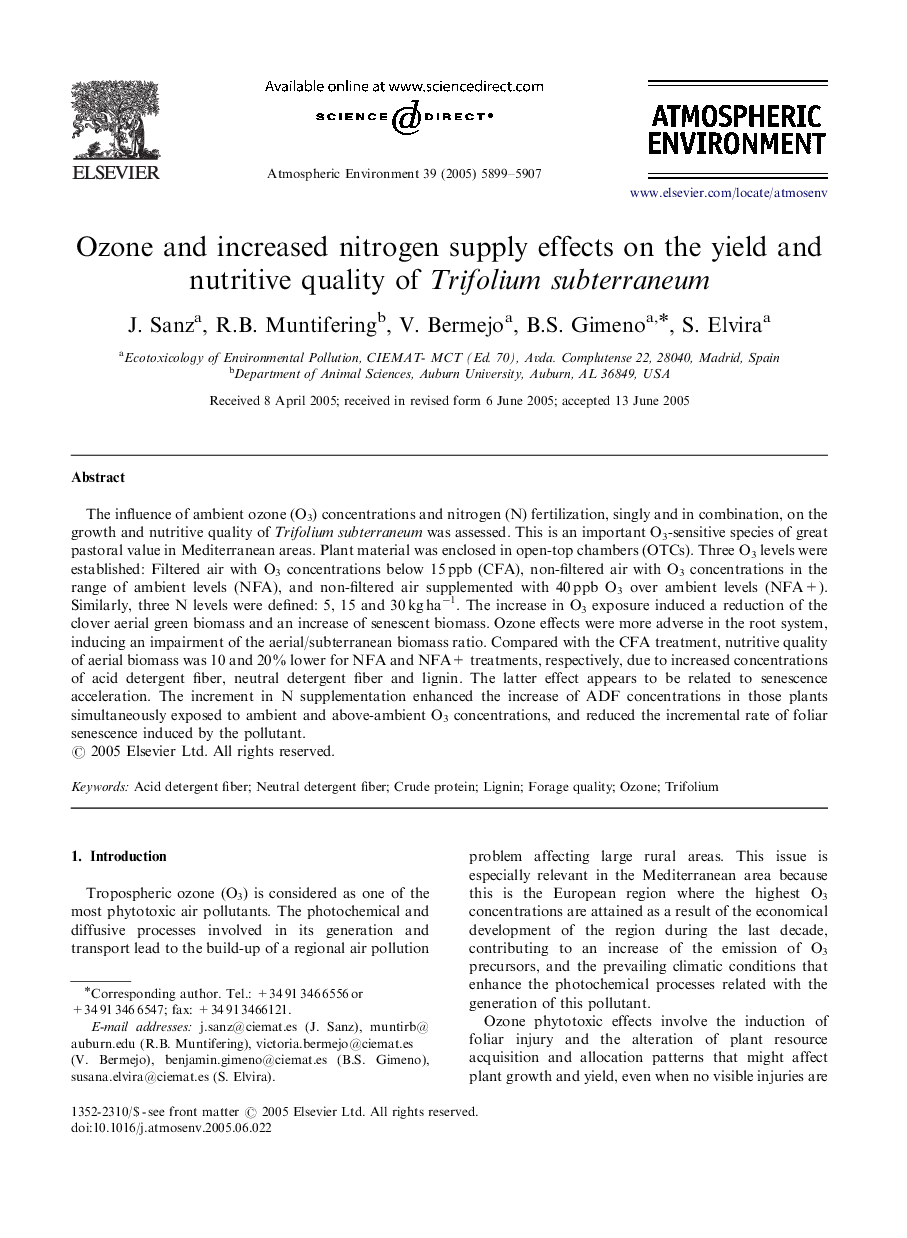| Article ID | Journal | Published Year | Pages | File Type |
|---|---|---|---|---|
| 4444783 | Atmospheric Environment | 2005 | 9 Pages |
The influence of ambient ozone (O3) concentrations and nitrogen (N) fertilization, singly and in combination, on the growth and nutritive quality of Trifolium subterraneum was assessed. This is an important O3-sensitive species of great pastoral value in Mediterranean areas. Plant material was enclosed in open-top chambers (OTCs). Three O3 levels were established: Filtered air with O3 concentrations below 15 ppb (CFA), non-filtered air with O3 concentrations in the range of ambient levels (NFA), and non-filtered air supplemented with 40 ppb O3 over ambient levels (NFA+). Similarly, three N levels were defined: 5, 15 and 30 kg ha−1. The increase in O3 exposure induced a reduction of the clover aerial green biomass and an increase of senescent biomass. Ozone effects were more adverse in the root system, inducing an impairment of the aerial/subterranean biomass ratio. Compared with the CFA treatment, nutritive quality of aerial biomass was 10 and 20% lower for NFA and NFA+ treatments, respectively, due to increased concentrations of acid detergent fiber, neutral detergent fiber and lignin. The latter effect appears to be related to senescence acceleration. The increment in N supplementation enhanced the increase of ADF concentrations in those plants simultaneously exposed to ambient and above-ambient O3 concentrations, and reduced the incremental rate of foliar senescence induced by the pollutant.
